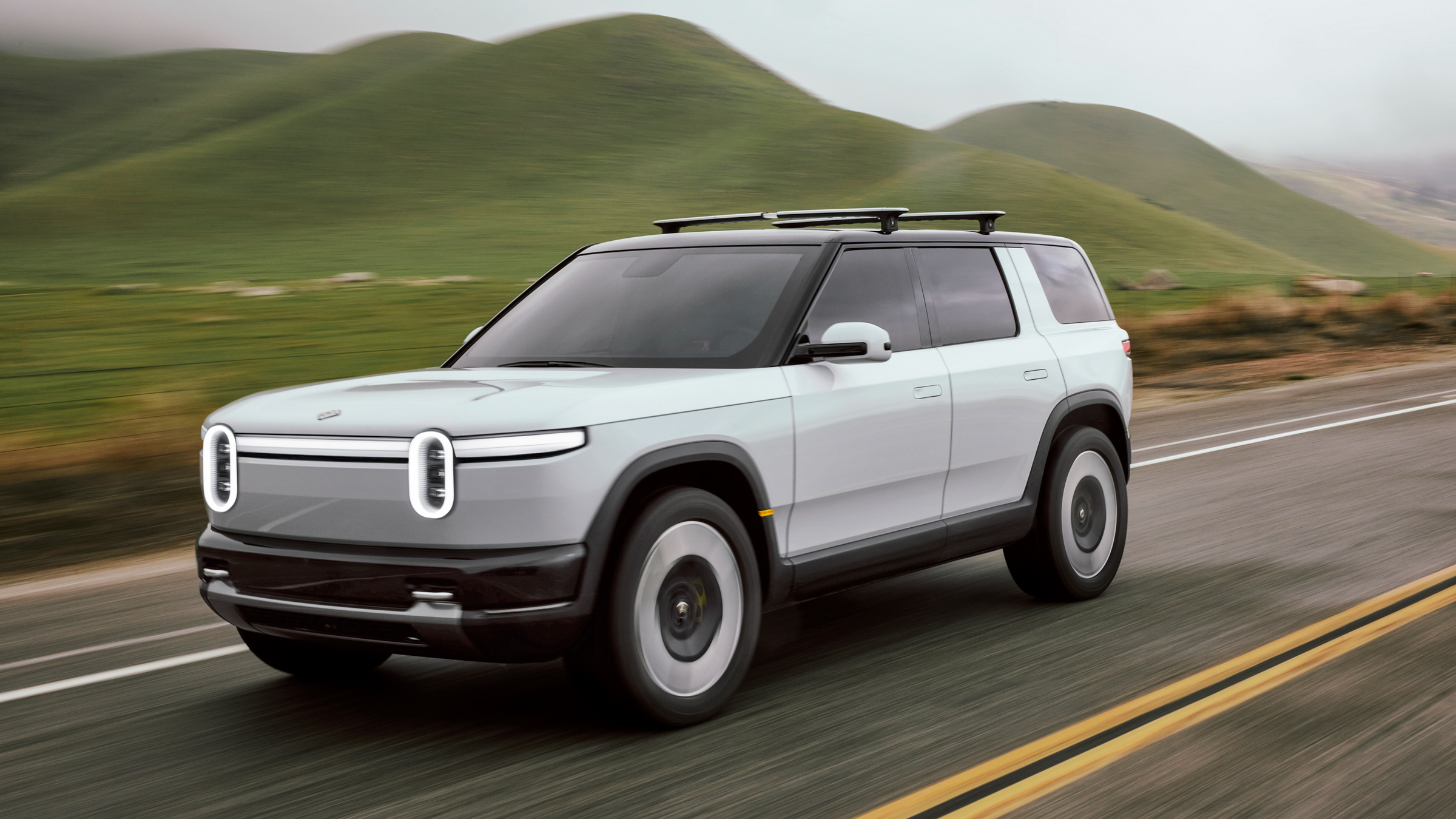

A California electric car startup has announced a couple of new models — but to be clear, we’re not talking about Tesla. This is Rivian, an EV maker that was founded back in 2009 and has been busy producing the electric R1S SUV and closely related R1T pickup truck for the past couple of years.
With production of those flagship models ramping up, it’s time for Rivian to expand its range, build electric cars that are affordable for more people — and, eventually, bring them to Europe. The company revealed three new vehicles in Laguna Beach, California this week.
The first was exactly what we expected, an electric SUV that’s a bit smaller than the R1 and called the R2. But then along came the surprises. Rivian followed up with the R3, an even smaller vehicle that is expected to be priced from around $35,000 (£25k) and with a dose of retro styling that we think looks seriously cool. Then, as a final flourish — a Steve Jobs-esque, “one more thing,” no less — came the R3X, complete with extra power, raised ride height, a wider track and, I suspect, the off-roading abilities of a mountain goat with a caffeine addiction.
Rivian R2
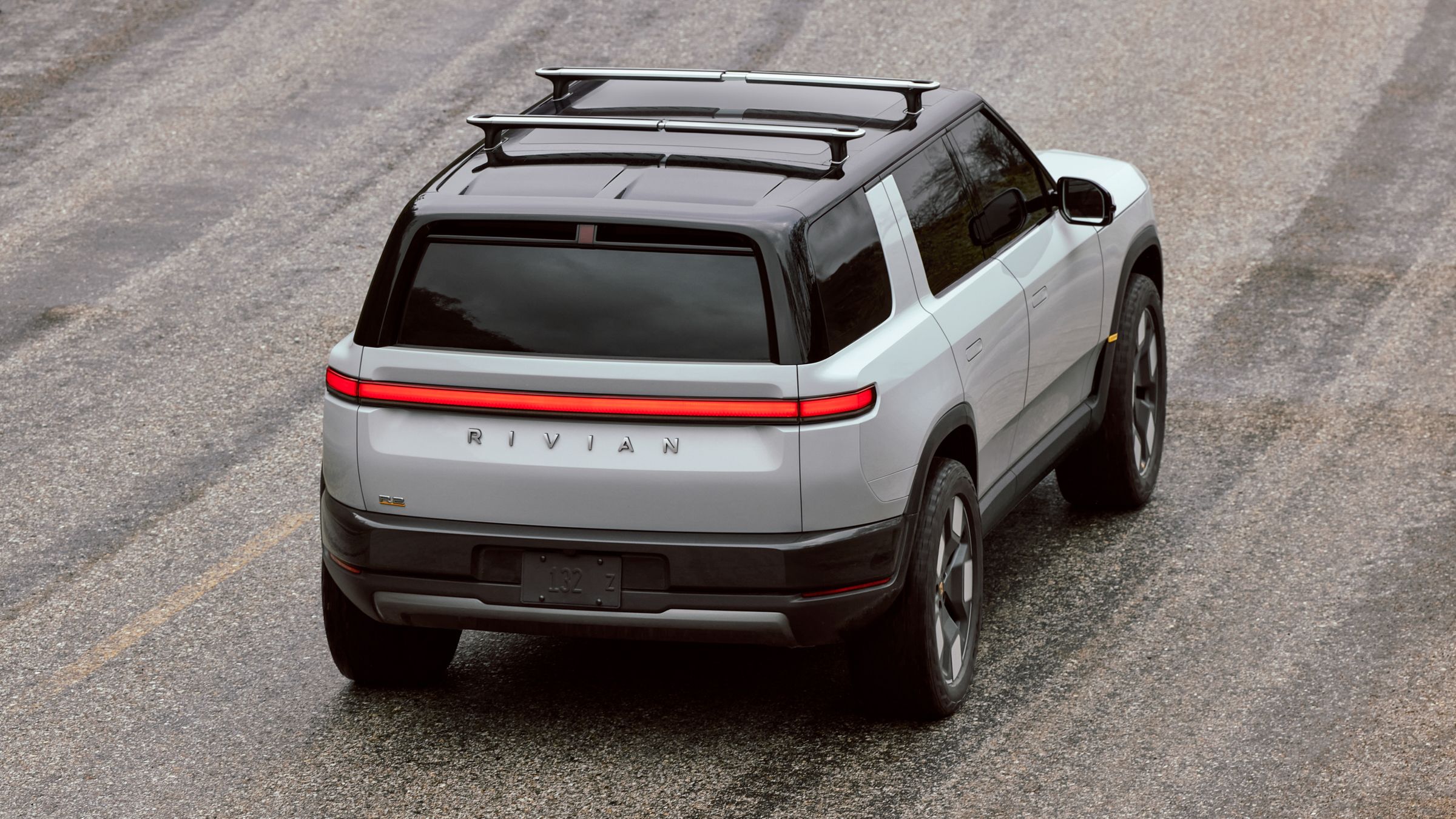
First, let’s rewind back to the R2. This is the car that’s closest to production and Rivian says its factory will begin churning it out in the first half of 2026. It’s roughly the same size as the Tesla Model Y, but slightly taller and with the boxy, off-road styling we’ve come to expect from Rivian.
The R2 will be available with three powertrain options, starting with an entry-level, single-motor variant with rear-wheel-drive. This is followed by a dual-motor R2 with all-wheel-drive, and lastly there’s a flagship triple-motor model, which has two motors on the rear axle and one on the front. You can expect to see some very clever torque vectoring from that dual setup at the rear, and it’ll be properly rapid in a straight line; Rivian is claiming a sub-3.0 second 0-60 mph time for the triple-motor R2.
Rivian hasn’t revealed much else for now, but says the R2 has an “anticipated range” of over 300 miles, with DC fast charging filling the battery from 10 to 80% in “as few as 30 minutes.”
The R2 is described as a mid-sized SUV (by US standards) with interior space for five adults over six feet tall, plus there’s space for two large suitcases, two carry-on cases and several backpacks in the boot, and a frunk (or froot, if you wish) up front with space for another carry-on case and a backpack.
Sign up to the T3 newsletter for smarter living straight to your inbox
Get all the latest news, reviews, deals and buying guides on gorgeous tech, home and active products from the T3 experts
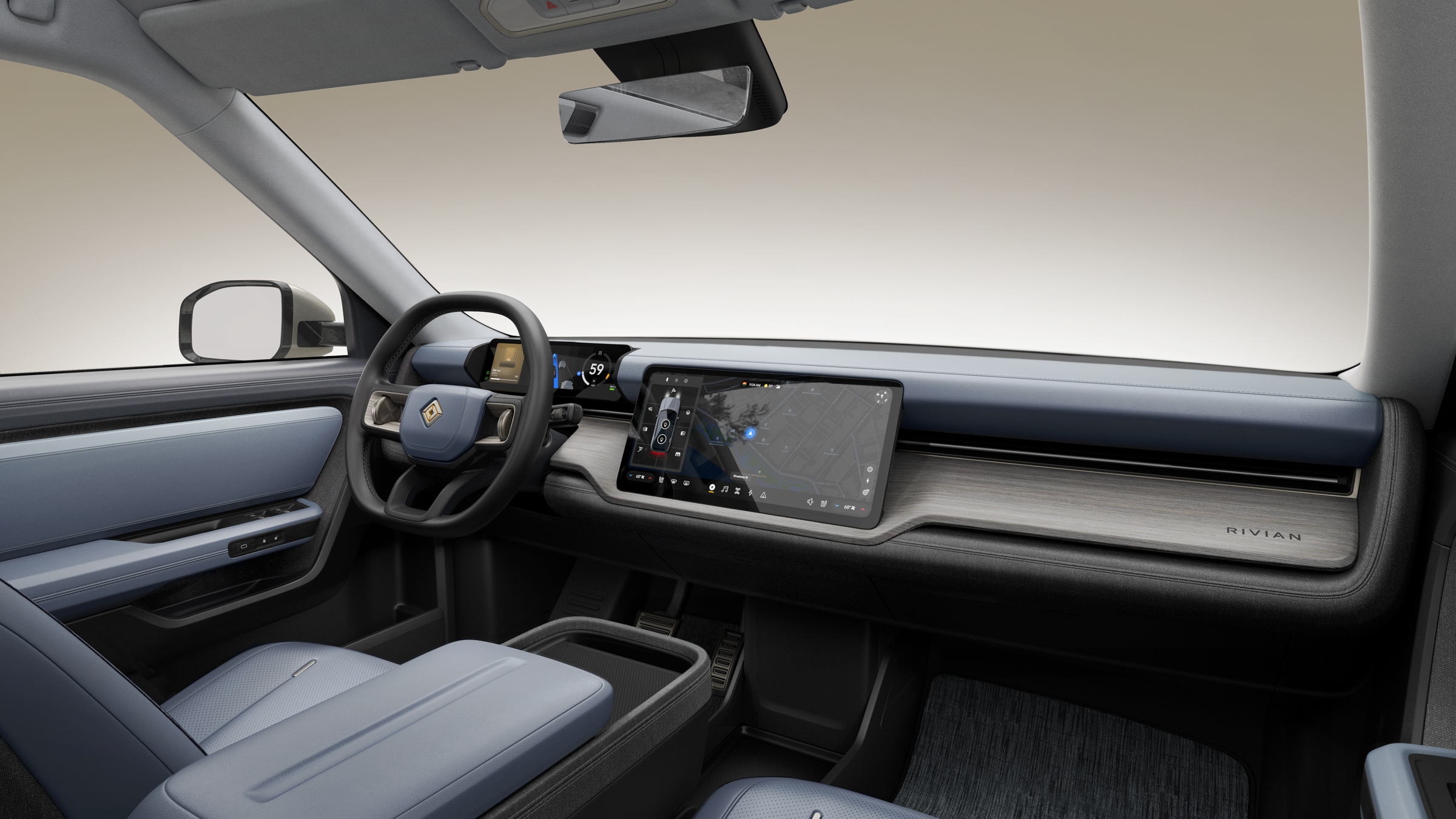
The back seats fold flat, of course, but so do the front – a feature Rivian says provides “a true car camping experience fit for two people.” Camping without the faff of a tent is something I can get onboard with.
Rivian has mercifully avoided attending the Tesla School of Removing All Useful Switchgear, so traditional stalks remain, and so too does a normal, round steering wheel. No yokes here, thank you very much. Behind the wheel there’s a nice, big driver display, and in the centre of the dashboard the R2 has a large touchscreen for infotainment duties. Rivian also made a point of the R2 having not one, but two gloveboxes (two!), so there’s plenty of space for your mittens.
As you’d expect from a California car company, the R2 is packed with autonomous driving tech. This includes 11 cameras and five radar sensors, all feeding data to Rivian’s autonomous and driver-assistance systems.
Priced from $45,000 (£35,000 at today’s exchange rate), the R2 will arrive in the US in 2026. Rivian says it’ll also come to Europe, but there’s no word yet on when that’ll happen, or if the UK (and other right-hand-drive markets) are also on Rivian’s radar.
Rivian R3 and R3X
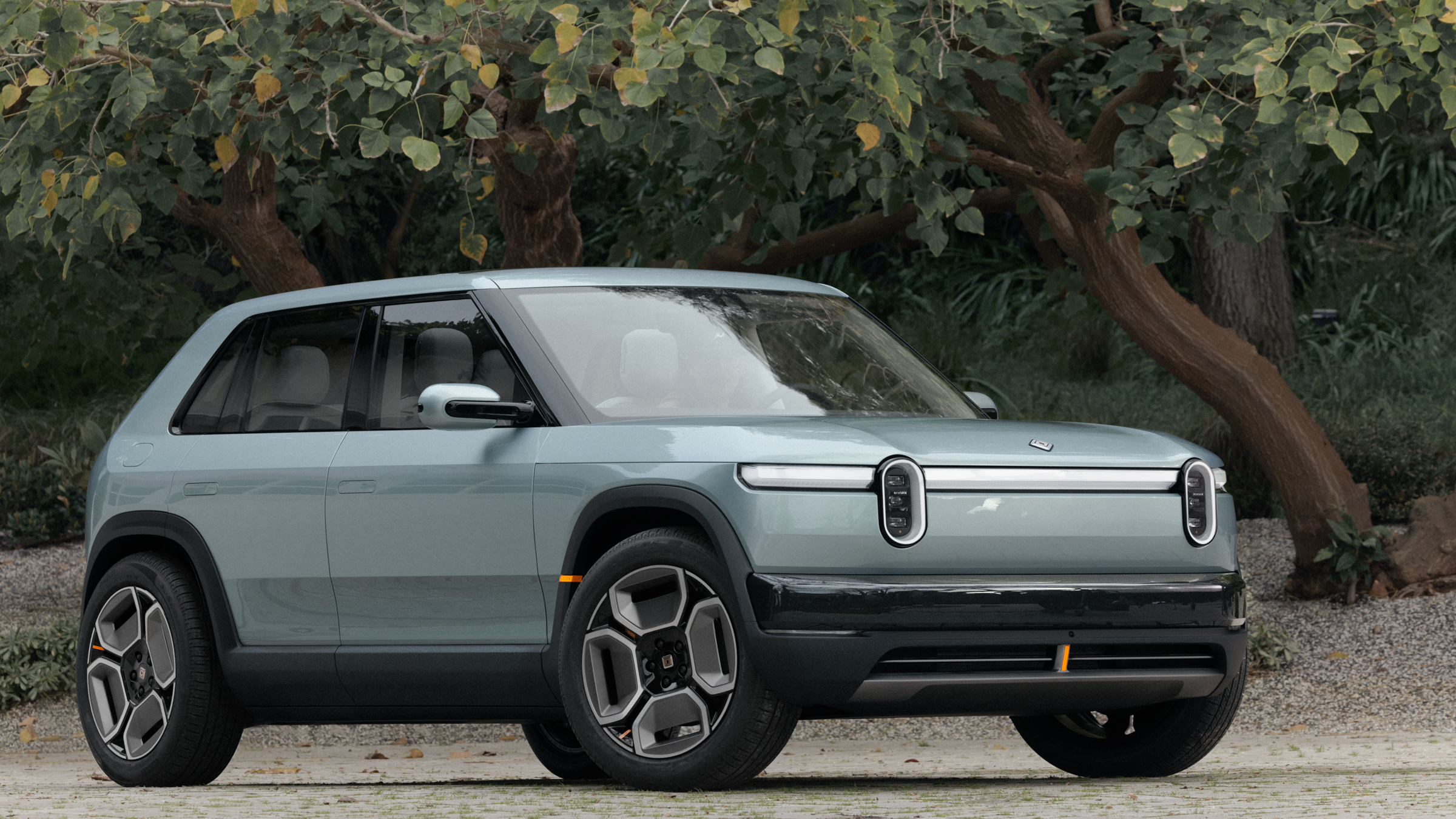
Next up, the R3. This was a total surprise from Rivian and, as far as I’ve seen on social media at least, has been incredibly well-received from consumers crying out for affordable electric cars that are small but packed with character.
Not much was said about the R3, and I suspect what we saw at Rivian’s event was little more than a show car capable of moving at walking pace. Regardless, this is a seriously cool looking thing that I hope makes it into production by 2027 or so. The R3 is based on the same electric platform as the R2, and Rivian says the pumped-up R3X (pictured below; yet another surprise reveal) will hit 60 mph in “well under” three seconds.
There are design elements from all sorts of older cars in the R3’s appearance. There’s a bit of Peugeot 205 around the C-pillar, while the overall look isn’t a million miles from a classic Ford Bronco or the Lada Niva – and to be clear, I mean that as a good thing. I can see the Rivian R3 becoming an instant cult classic in the way the most recent Suzuki Jimny did, also thanks to its compact dimensions and tough but approachable Tonka toy persona.
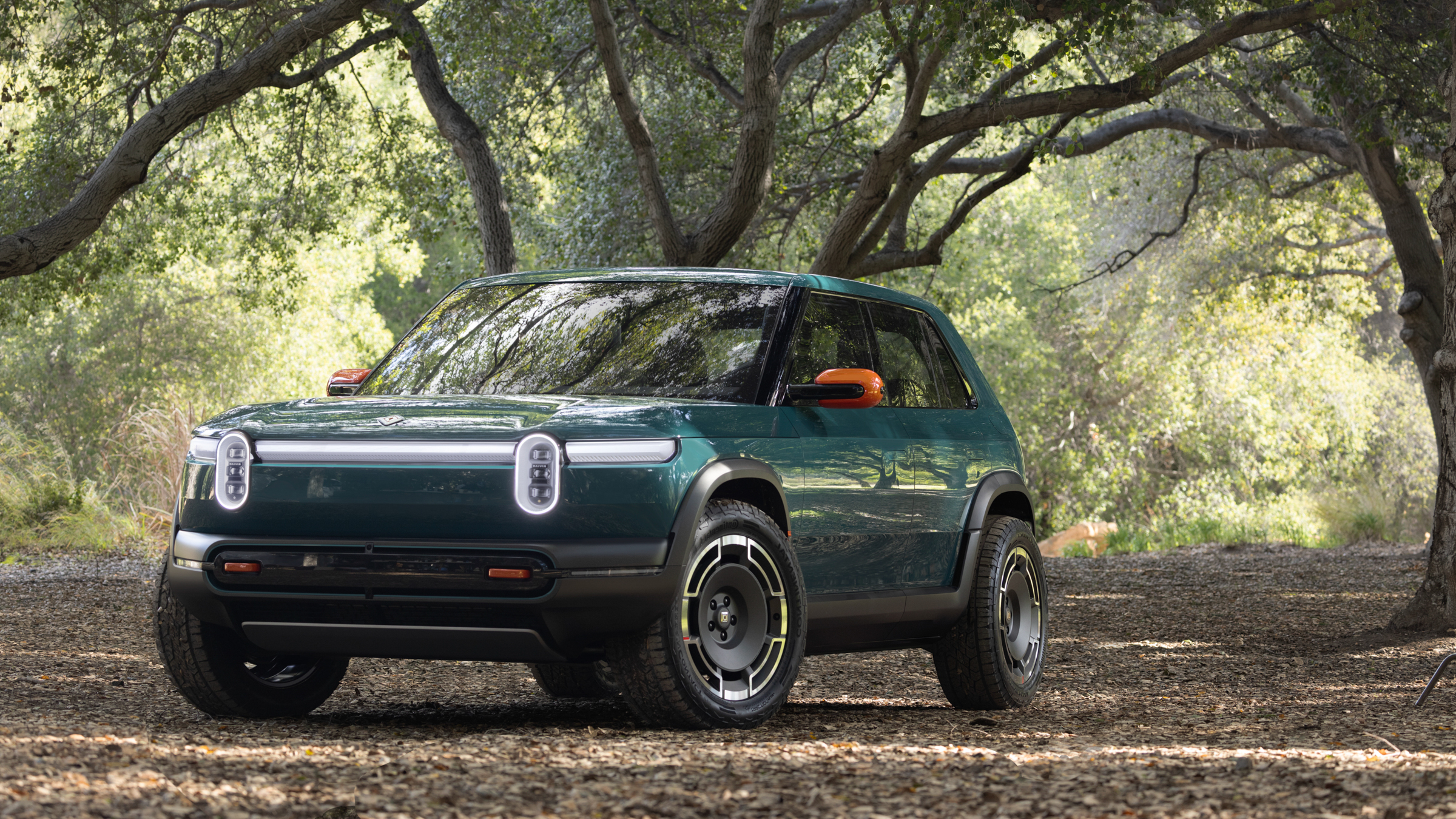
Rivian’s business isn’t in the best of health, with only around 50,000 cars delivered last year (compared to Tesla’s 1.8 million) and a share price that has lost 90% of its value since floating on the Nasdaq in late 2021.
But there could be light at the end of the tunnel, as that lowly share price jumped more than 10% on the R2 and R3 news. Hopefully, Rivian can build some momentum on the back of that and give Tesla some serious competition.
Alistair is a freelance automotive and technology journalist. He has bylines on esteemed sites such as the BBC, Forbes, TechRadar, and of best of all, T3, where he covers topics ranging from classic cars and men's lifestyle, to smart home technology, phones, electric cars, autonomy, Swiss watches, and much more besides. He is an experienced journalist, writing news, features, interviews and product reviews. If that didn't make him busy enough, he is also the co-host of the AutoChat podcast.
-
 Campfire Audio’s new Alien Brain IEMs are a hi-fi, sci-fi glass act
Campfire Audio’s new Alien Brain IEMs are a hi-fi, sci-fi glass actCampfire promises "close encounters of the Hi-Fi kind"
By Carrie Marshall Published
-
 Toshiba’s portable record player is a Walkman for your vinyl
Toshiba’s portable record player is a Walkman for your vinylToshiba's tiny record player is a lot more portable than your record collection
By Carrie Marshall Published